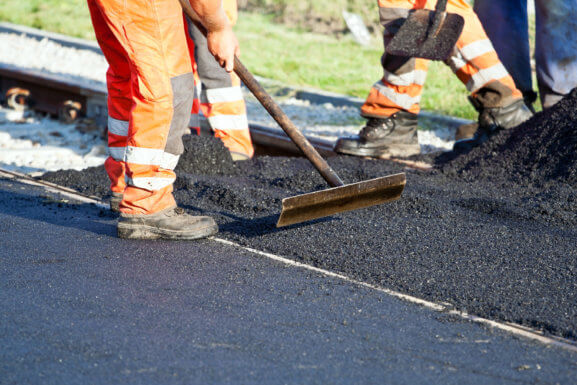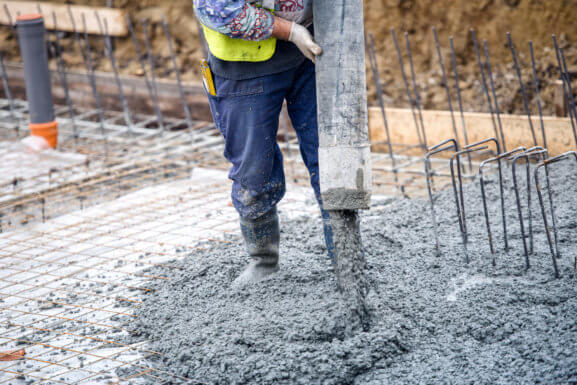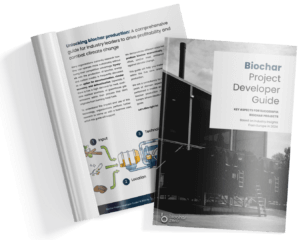In the remediation of contaminated sites, there is an increasing demand for more economical and environmentally sustainable adsorbents that can serve as substitutes for fossil activated carbon1Ludovica Silvani, Sigurbjörg Hjartardottir, Lucie Bielská, Lucia Škulcová, Gerard Cornelissen, Luca Nizzetto, Sarah E. Hale,Can polyethylene passive samplers predict polychlorinated biphenyls (PCBs) uptake by earthworms and turnips in a biochar amended soil?, Science of The Total Environment,Volume 662, 2019,Pages 873-880, ISSN 0048-9697,https://doi.org/10.1016/j.scitotenv.2019.01.202. Many studies already show the potential of biochar as a powerful substitute2M. Sparrevik, T. Saloranta, G. Cornelissen, E. Eek, A.M. Fet, G.D. Breedveld, I. Linkov Use of life cycle assessments to evaluate the environmental footprint of contaminated sediment remediation Environ. Sci. Technol., 45 (10) (2011), pp. 4235-4241.
Advantages of Biochar in Recultivation and Remediation
- Effective adsorption of heavy metals, organic pollutants such as pesticides, PAHs, or antibiotics3Prakash Srinivasan, Ajit K. Sarmah, Characterisation of agricultural waste-derived biochars and their sorption potential for sulfamethoxazole in pasture soil: A spectroscopic investigation, Science of The Total Environment, Volume 502, 2015, Pages 471-480, ISSN 0048-9697, https://doi.org/10.1016/j.scitotenv.2014.09.048. & Peng Yuan, Jianqiao Wang, Yijun Pan, Boxiong Shen, Chunfei Wu,Review of biochar for the management of contaminated soil: Preparation, application and prospect, Science of The Total Environment,Volume 659, 2019, Pages 473-490, ISSN 0048-9697, https://doi.org/10.1016/j.scitotenv.2018.12.400
- Possibility of regulating soils in terms of structure and physico-chemical properties, such as pH, cation exchange capacity or water retention capacity4Peng Yuan, Jianqiao Wang, Yijun Pan, Boxiong Shen, Chunfei Wu,Review of biochar for the management of contaminated soil: Preparation, application and prospect, Science of The Total Environment,Volume 659, 2019, Pages 473-490, ISSN 0048-9697, https://doi.org/10.1016/j.scitotenv.2018.12.400.
- Mitigating global warming problems from soils by altering the bioavailability of elements such as C, N, and K5Peng Yuan, Jianqiao Wang, Yijun Pan, Boxiong Shen, Chunfei Wu,Review of biochar for the management of contaminated soil: Preparation, application and prospect, Science of The Total Environment,Volume 659, 2019, Pages 473-490, ISSN 0048-9697, https://doi.org/10.1016/j.scitotenv.2018.12.400.
- Cost-efficient and ecological substitute for fossil activated carbon6M. Sparrevik, T. Saloranta, G. Cornelissen, E. Eek, A.M. Fet, G.D. Breedveld, I. Linkov Use of life cycle assessments to evaluate the environmental footprint of contaminated sediment remediation Environ. Sci. Technol., 45 (10) (2011), pp. 4235-4241
Biochar has been proven to adsorb a wide range of organic and inorganic compounds in water and soil7Prakash Srinivasan, Ajit K. Sarmah, Characterisation of agricultural waste-derived biochars and their sorption potential for sulfamethoxazole in pasture soil: A spectroscopic investigation, Science of The Total Environment, Volume 502, 2015, Pages 471-480, ISSN 0048-9697, https://doi.org/10.1016/j.scitotenv.2014.09.048.. This is due to the high specific surface area, hydrophobic property, and strong aromaticity of biochar8Prakash Srinivasan, Ajit K. Sarmah, Characterisation of agricultural waste-derived biochars and their sorption potential for sulfamethoxazole in pasture soil: A spectroscopic investigation, Science of The Total Environment, Volume 502, 2015, Pages 471-480, ISSN 0048-9697, https://doi.org/10.1016/j.scitotenv.2014.09.048.. Many studies agree that biochar is a more cost-effective and ecological adsorbent than fossil activated carbon9M. Sparrevik, T. Saloranta, G. Cornelissen, E. Eek, A.M. Fet, G.D. Breedveld, I. Linkov Use of life cycle assessments to evaluate the environmental footprint of contaminated sediment remediation Environ. Sci. Technol., 45 (10) (2011), pp. 4235-4241.
In addition to its decontaminating properties, biochar can have a regenerative effect on the soil habitat. Thus, it can be used to adapt the lifestyle and function of soil microorganisms and leads to an increase in plant growth by making nutrients available. 10Peng Yuan, Jianqiao Wang, Yijun Pan, Boxiong Shen, Chunfei Wu,Review of biochar for the management of contaminated soil: Preparation, application and prospect, Science of The Total Environment,Volume 659, 2019, Pages 473-490, ISSN 0048-9697, https://doi.org/10.1016/j.scitotenv.2018.12.400.
Degree of Development
It has been shown in many studies that biochar produced under higher temperatures has better adsorption potential than biochar produced under low temperatures. 11Prakash Srinivasan, Ajit K. Sarmah, Characterisation of agricultural waste-derived biochars and their sorption potential for sulfamethoxazole in pasture soil: A spectroscopic investigation, Science of The Total Environment, Volume 502, 2015, Pages 471-480, ISSN 0048-9697, https://doi.org/10.1016/j.scitotenv.2014.09.048.
In general, the feedstock and processing conditions such as pyrolysis temperature, residence time, gas flow rate, and additives have varying effects on the properties and applications of biochar. 12Peng Yuan, Jianqiao Wang, Yijun Pan, Boxiong Shen, Chunfei Wu,Review of biochar for the management of contaminated soil: Preparation, application and prospect, Science of The Total Environment,Volume 659, 2019, Pages 473-490, ISSN 0048-9697, https://doi.org/10.1016/j.scitotenv.2018.12.400.
Application
The specific applications of biochar for recultivation and remediation of contaminated sites are manyfold.
Among other things, biochar can help remediate soils contaminated with pesticides, herbicides and fungicides, especially in dry climates13Bates, Albert and Draper, Kathleen (2021) Cool Down. Mit Pflanzenkohle die Klimakrise lösen?. S. 134, deutsche Erstausgabe, oekom Verlag München. Biochar is also recommended as an efficient absorbent for soils contaminated with organic pollutants, as it immobilizes and improves the performance of biodegradation14Carlos García-Delgado, Irene Alfaro-Barta, Enrique Eymar, Combination of biochar amendment and mycoremediation for polycyclic aromatic hydrocarbons immobilization and biodegradation in creosote-contaminated soil, Journal of Hazardous Materials, Volume 285, 2015, Pages 259-266, ISSN 0304-3894, https://doi.org/10.1016/j.jhazmat.2014.12.002.. Low-temperature biochar with a high nutrient content15Soheil Valizadeh, Sang Soo Lee, Kitae Baek, Yong Jun Choi, Byong-Hun Jeon, Gwang Hoon Rhee, Kun-Yi Andrew Lin, Young-Kwon Park, Bioremediation strategies with biochar for polychlorinated biphenyls (PCBs)-contaminated soils: A review, Environmental Research, Volume 200, 2021, 111757, ISSN 0013-9351, https://doi.org/10.1016 is suitable for the biological purification of PCBs (polychlorinated biphenyls) from contaminated soils. The adsorbed PCBs are easily released and biodegraded. Phytoremediation is also possible.16Soheil Valizadeh, Sang Soo Lee, Kitae Baek, Yong Jun Choi, Byong-Hun Jeon, Gwang Hoon Rhee, Kun-Yi Andrew Lin, Young-Kwon Park, Bioremediation strategies with biochar for polychlorinated biphenyls (PCBs)-contaminated soils: A review, Environmental Research, Volume 200, 2021, 111757, ISSN 0013-9351, https://doi.org/10.1016
With the phytoremediation methodology, another application of biochar is possible as well17Paz-Ferreiro, J., Lu, H., Fu, S., Méndez, A., and Gascó, G.: Use of phytoremediation and biochar to remediate heavy metal polluted soils: a review, Solid Earth, 5, 65–75, https://doi.org/10.5194/se-5-65-2014, 2014.: Harvested material resulting from the phytoremediation of heavy metals from soils can be pyrolyzed into biochar. Subsequently, the biochar provides carbon storage and improved material properties in building materials.
In addition, biochar can serve as a filter for dewatering wastewater sedimentation basins18Bates, Albert and Draper, Kathleen (2021) Cool Down. Mit Pflanzenkohle die Klimakrise lösen?. S. 134, deutsche Erstausgabe, oekom Verlag München. To make this type of remediation cost-effective and to recycle waste, it is recommended to use biochar made from waste wood19Bates, Albert and Draper, Kathleen (2021) Cool Down. Mit Pflanzenkohle die Klimakrise lösen?. S. 134, deutsche Erstausgabe, oekom Verlag München. This is only possible if the remediated soil is not to be used for food cultivation afterwards.
Approval & Certification
Within the European Biochar Consortium (EBC) certification system, the EBC-BasicMaterial or EBC-ConsumerMaterial standard is recommended for biochar used for recultivation or remediation of contaminated sites.


Sources




